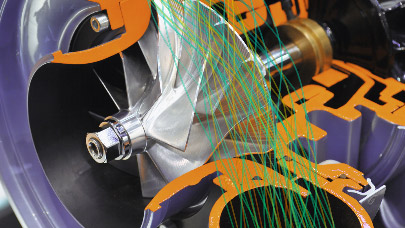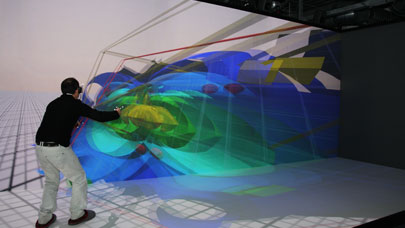Composites: ensuring high strength, reliability
While composites materials have garnered much attention for their inclusion in car bodies and aircraft fuselages, they also have important applications in turbomachinery. By fabricating turbine blades from these advanced materials, wind power companies in particular have combined light weight with outstanding aerodynamic performance.
Among best-in-class simulation platforms, the ANSYS portfolio of solutions – which I happen to know particularly well – offers a specialized tool, ANSYS Composite PrepPost, for modeling layered composites – while ANSYS Mechanical APDL supports simulations of ceramic matrix composites. These materials showing special promise as they can withstand the high temperatures associated with many turbomachinery applications, the combination of such tools is a winner.
If on top of that the solution includes specialized composites analysis and optimization technology, turbomachinery engineers are capable to define the optimal materials formula and layering strategy, then subject their designs to simple physical stresses. By computing progressive damage, delamination and cracking, they can confidently predict failure modes under demanding conditions.
Combustion modeling: new accuracy and fidelity
The global drive for greater energy efficiency has placed a new focus on the combustion processes that lie at the heart of many turbomachines. Higher firing temperatures can improve efficiency, yet they can degrade engine materials and shorten product life unless appropriate measures are taken.
Advanced modeling techniques – including thickened flame, improved spray and fuel evaporation models – allow engineers to better determine fuel–air mixing, flame position, temperature distribution and pollutant formation within combustors. High-fidelity meshing capabilities, combined with advanced turbulence modeling, give users an edge by resolving the geometry and flow to the degree required for accurate simulation.
Turbulence can be modeled via a variety of methods, depending on the needs of the engineering team and the specific combustion issue under study. In this area, only the best simulation software offer scale-resolving simulation (SRS) methods such as large- and detached- eddy simulation (LES and DES) as well as efficient scale-adaptive simulation (SAS) tools (more on Turbulence modeling).
Rotordynamics: ensuring stability
To combine light weight and a small profile with incredibly high strength, turbomachinery engineers make strategic trade-offs as they design rotor systems. The not only need to understand the dynamics of each individual component, but also to optimize the frequencies and vibration modes of the system as a whole.
Advanced simulation software help to illuminate these trade-offs by demonstrating how specific design choices – such as shaft size, bearing properties and spacing, and housing stiffness – will impact such performance characteristics as operating range and stability. It requires specialized functions to streamline the import process for bearing properties, as well as for other component properties. Multi-spool simulation capabilities enable realistic simulation of modern aircraft engines. Engineers have the flexibility to create full 3-D models of rotor systems or reduce their designs to axisymmetric models for faster analysis.
Heat transfer: optimizing thermal performance
As pressures escalate to increase energy efficiency via higher temperatures, thermal management issues are coming to the forefront among turbomachinery teams around the world.
This is a use case where you need to be able to couple coupling mechanical with CFD software in order to ensure that engine materials can withstand high temperatures – while also optimizing the effectiveness of their engine cooling strategies. Running these types of multiphysics studies is becoming easier due to improved capabilities in top simulation platforms like ANSYS Workbench to link fluid flows, conjugate heat transfer, thermal and mechanical stress, and deformation. Advanced turbulence models found in these packages also support the study of complex heat transfer processes.
With the need to simulate multiple physics under a comprehensive range of real-world operating conditions, heat transfer simulations can be very large and numerous. The compatibility of today’s most advanced solutions with high-performance computing (HPC) environments, combined with the rapid solvers some of these products include, has taken heat transfer modeling to a new level of speed and flexibility.
While few applications are as complex as turbomachinery, the good news is that turbomachinery engineers have always been among the first to embrace improved simulation capabilities to meet their advanced challenges. Turbomachines may never be simple to optimize but for more than 40 years, continuing advancements have been made in the ability to model and predict turbomachinery performance.
More around this topic...
In the same section
© HPC Today 2024 - All rights reserved.
Thank you for reading HPC Today.





























